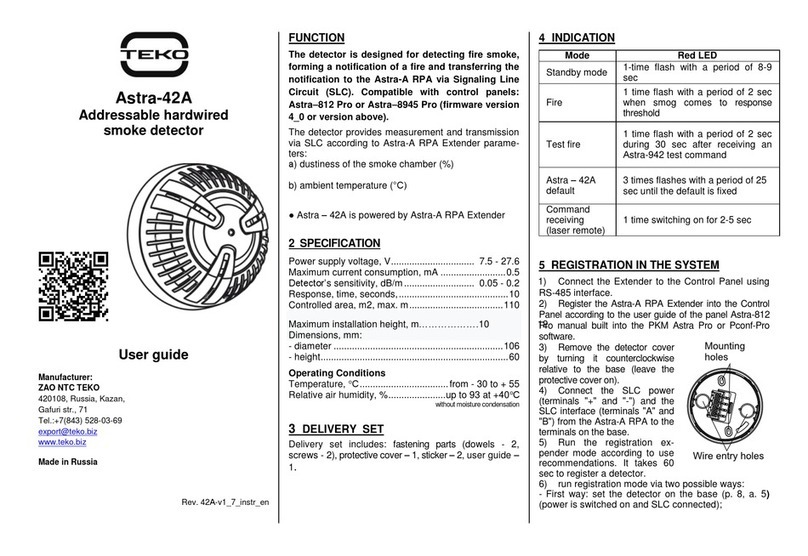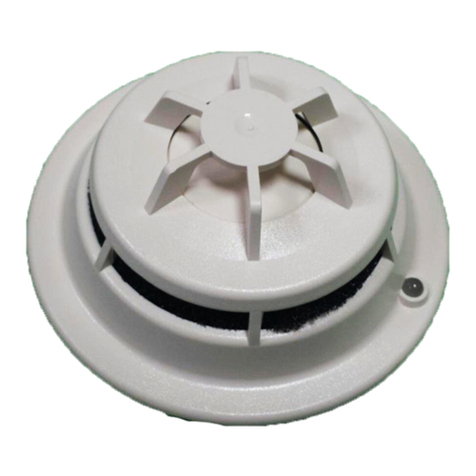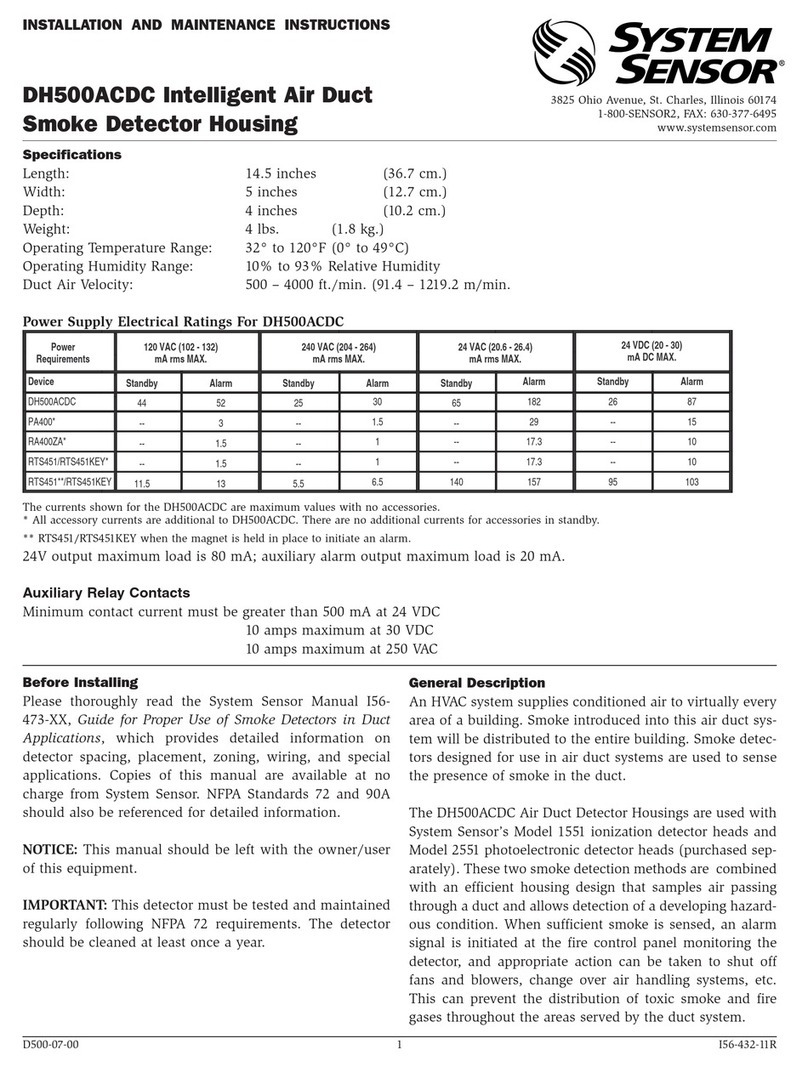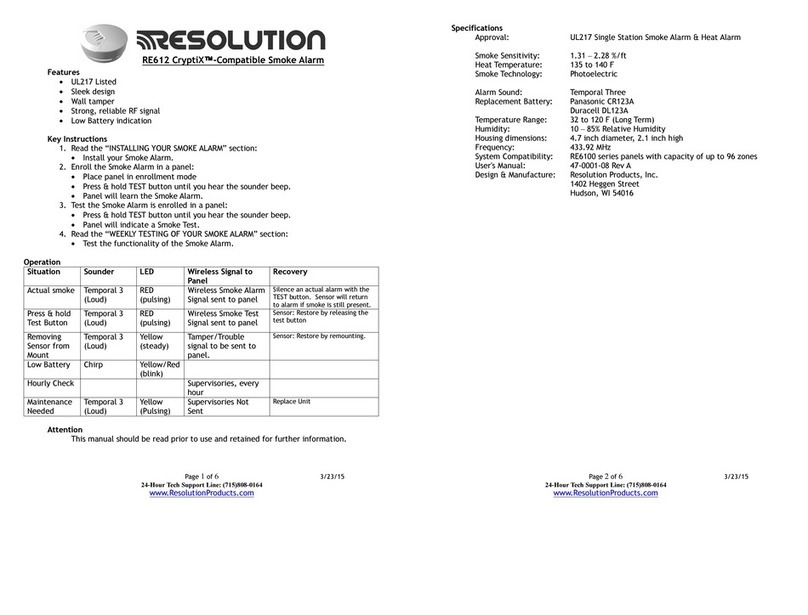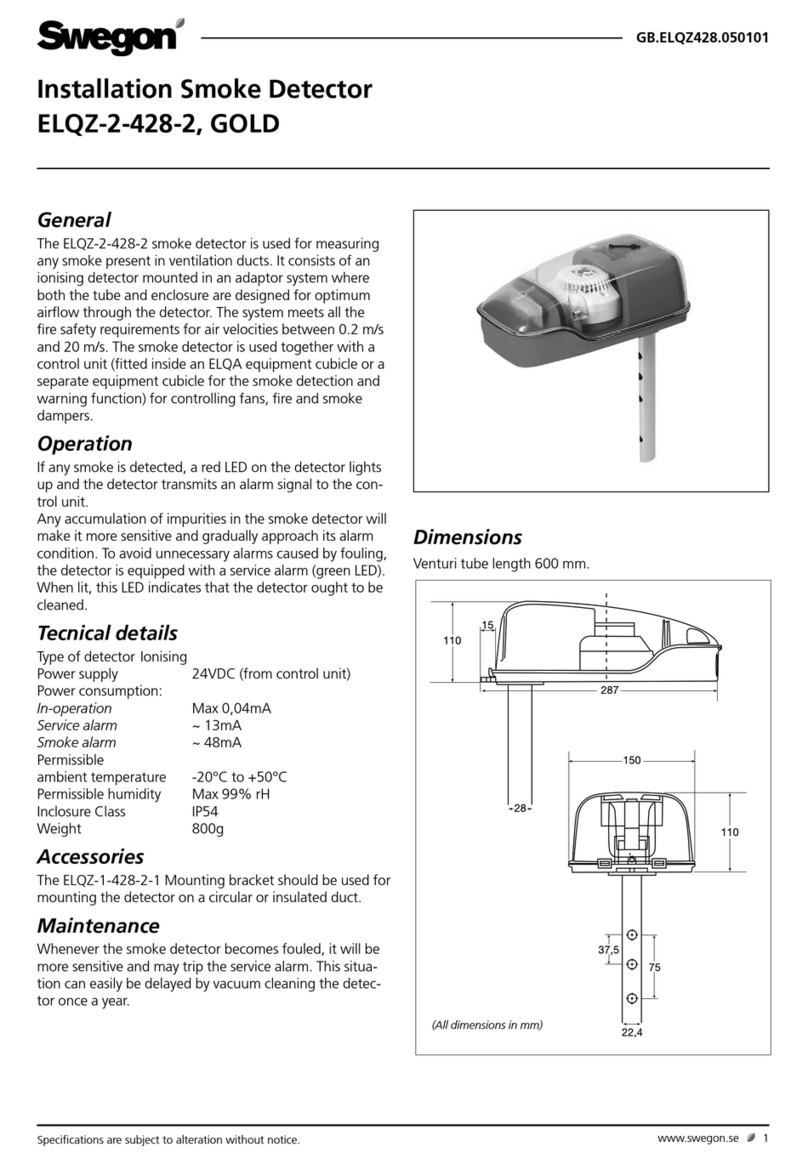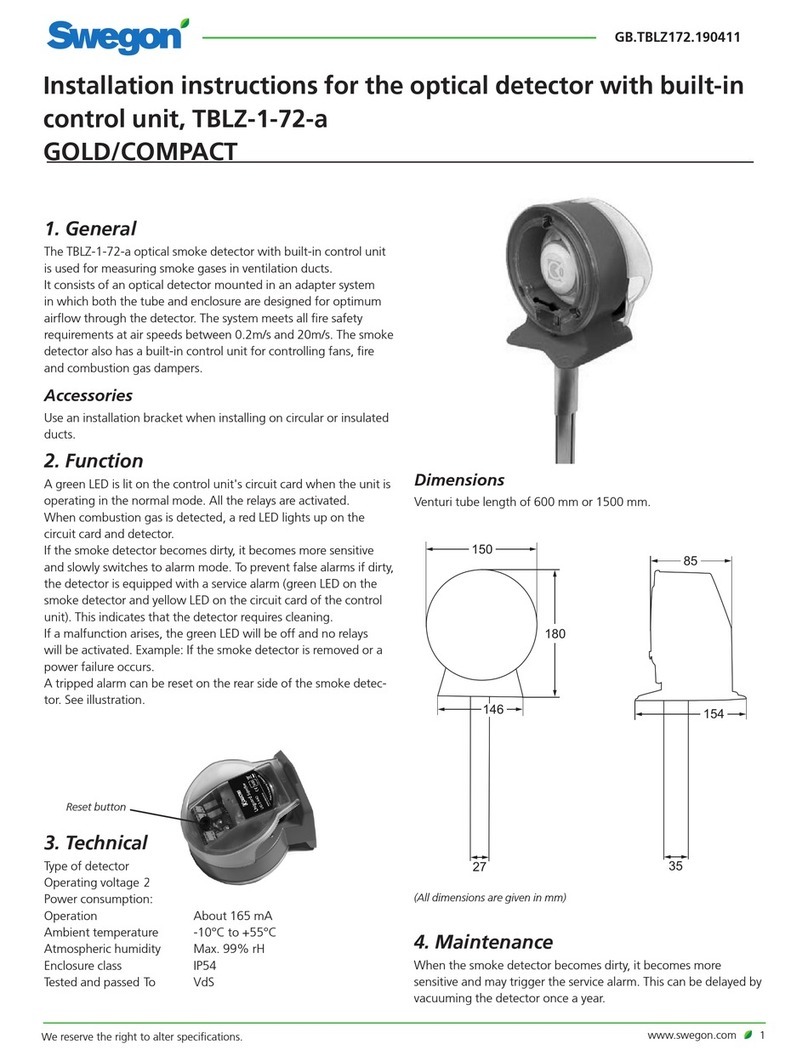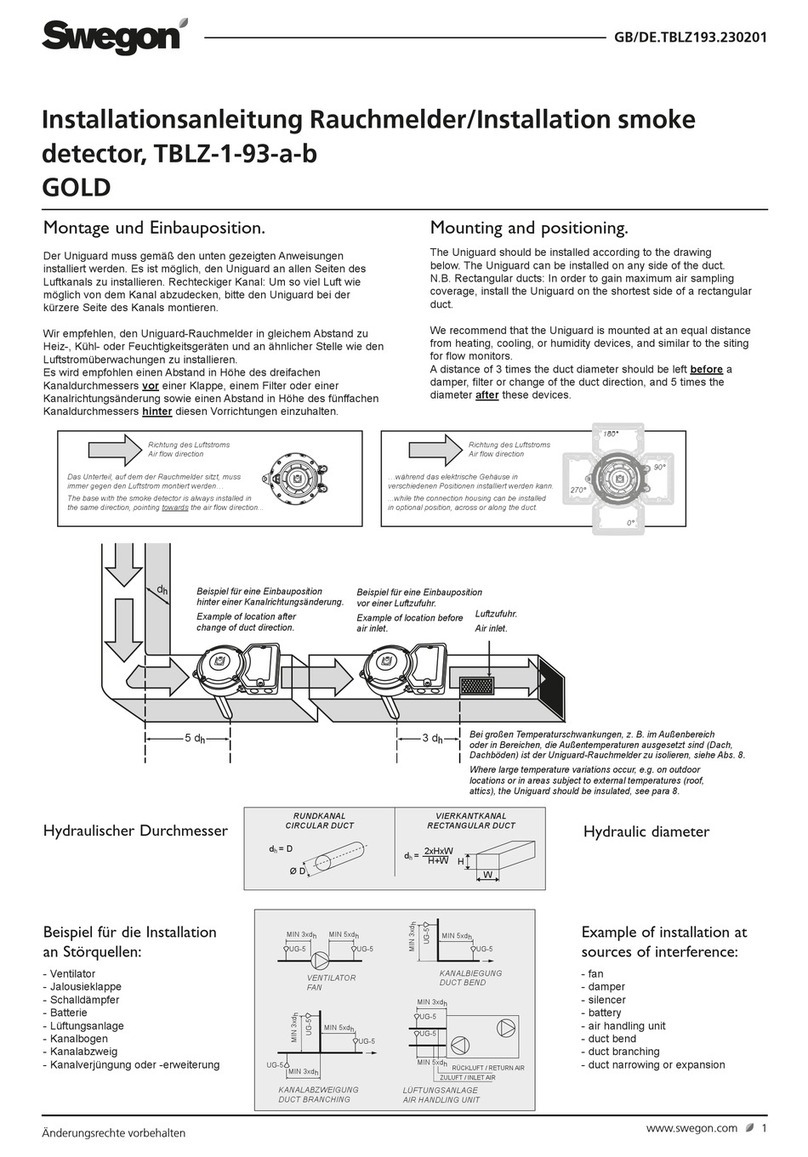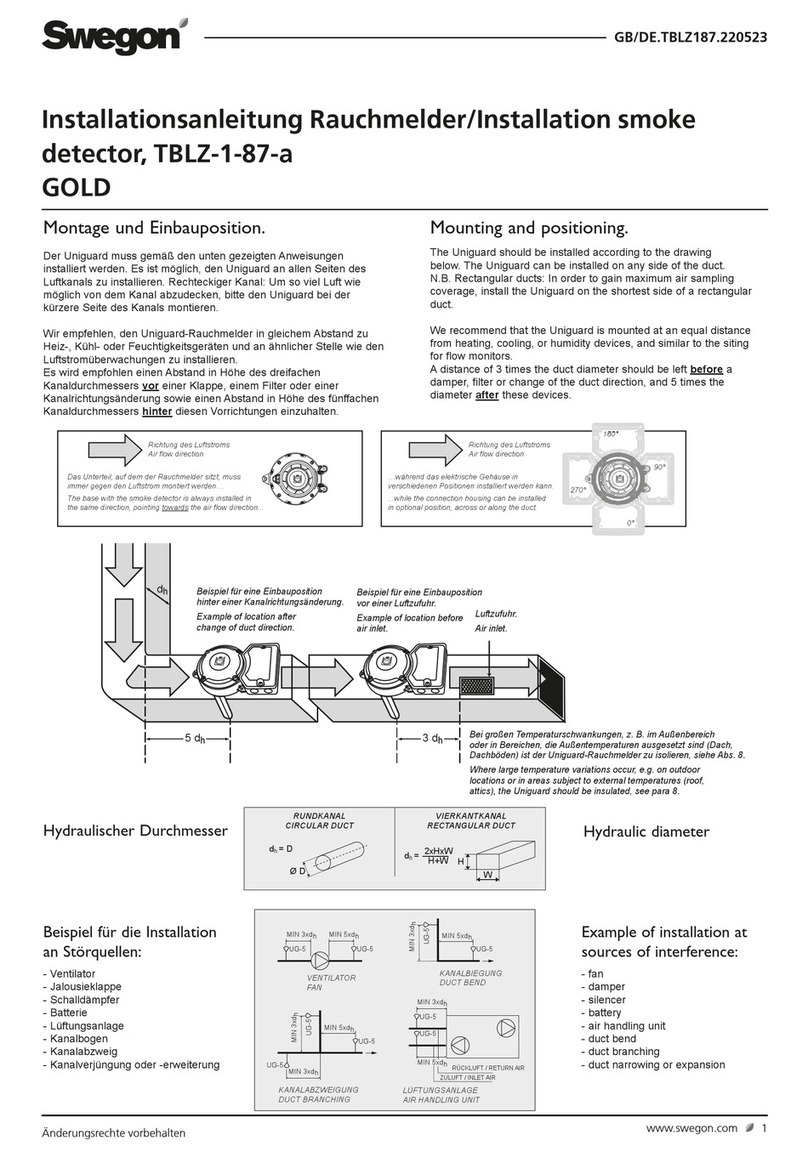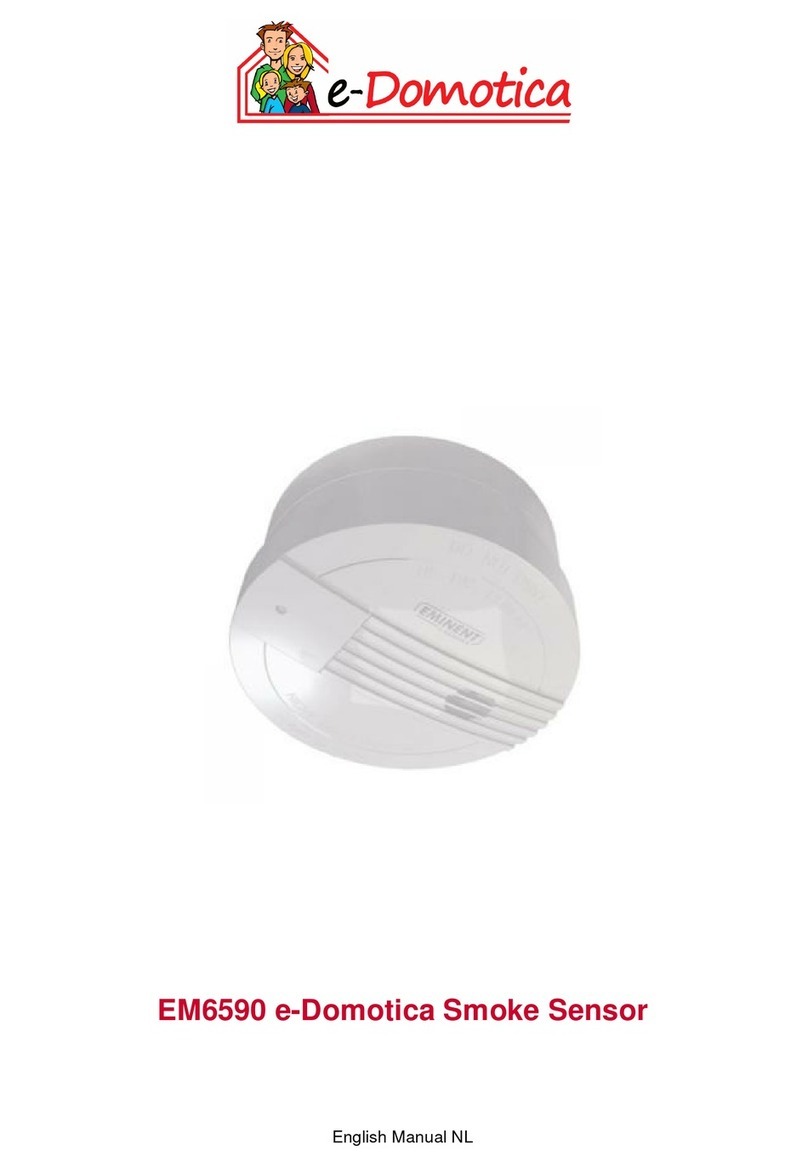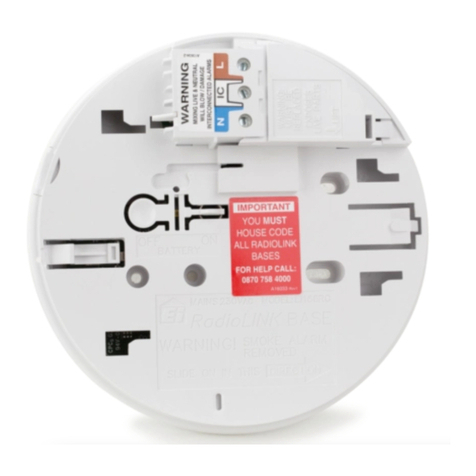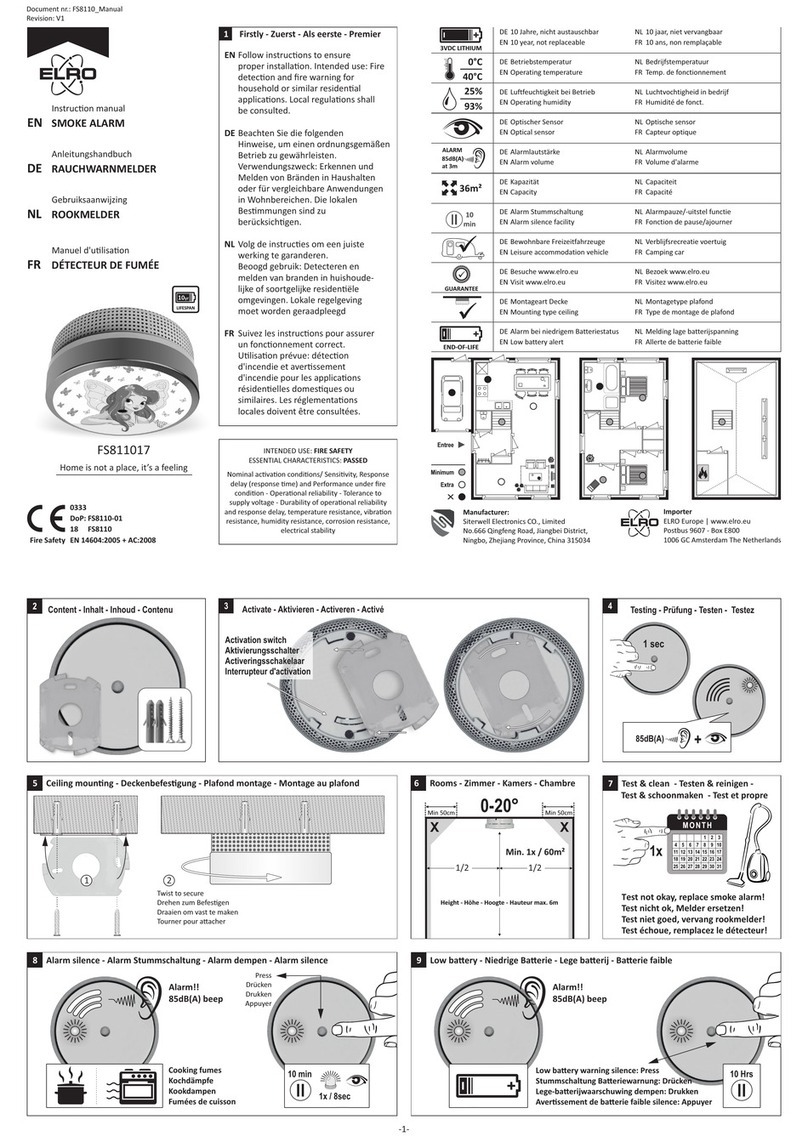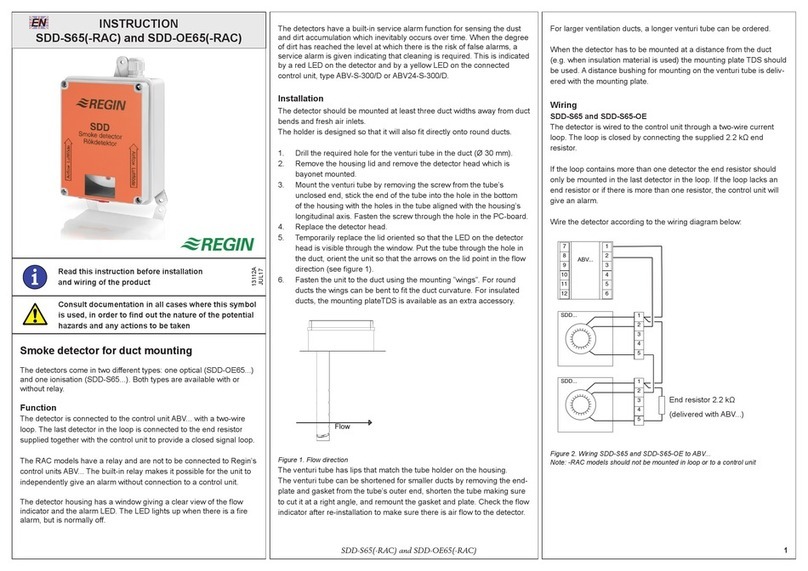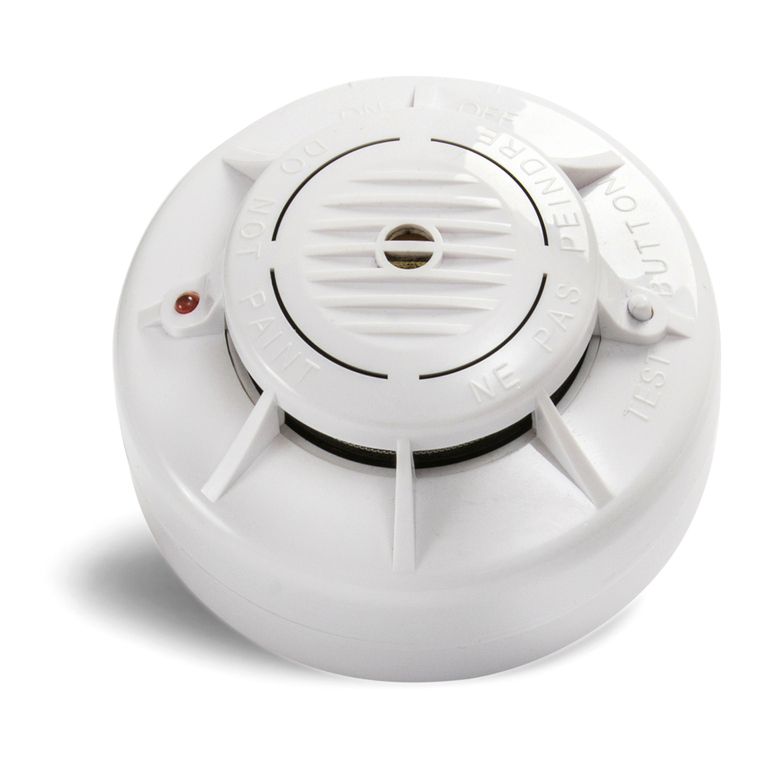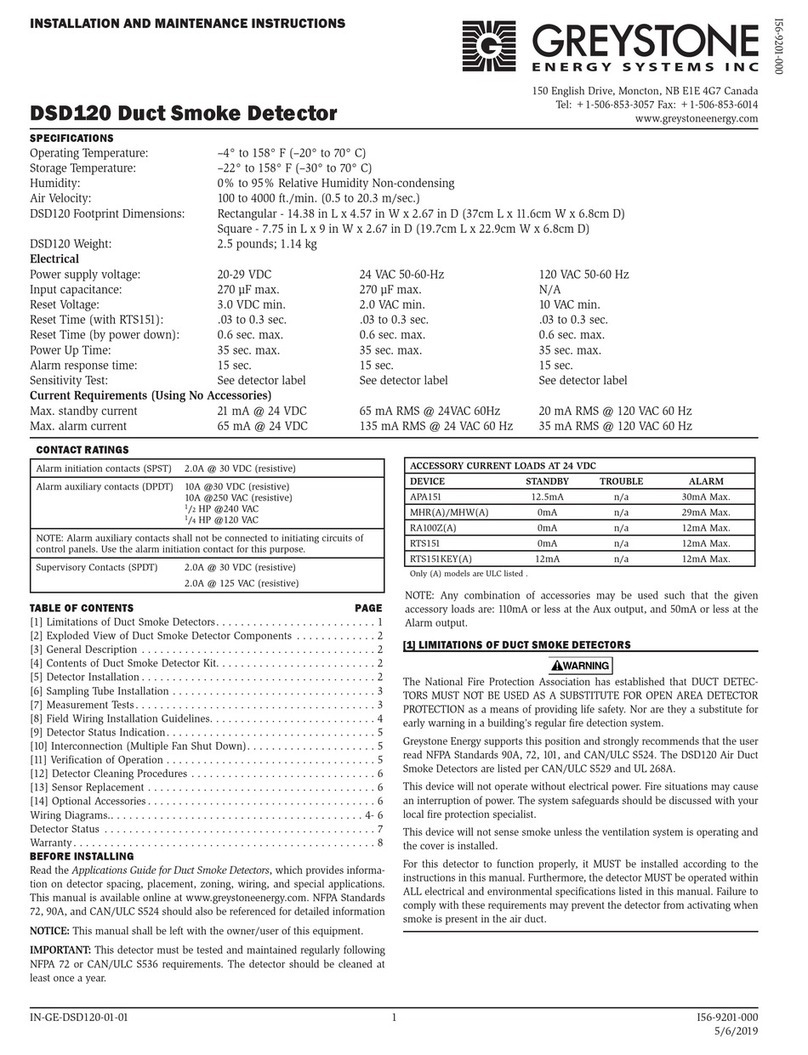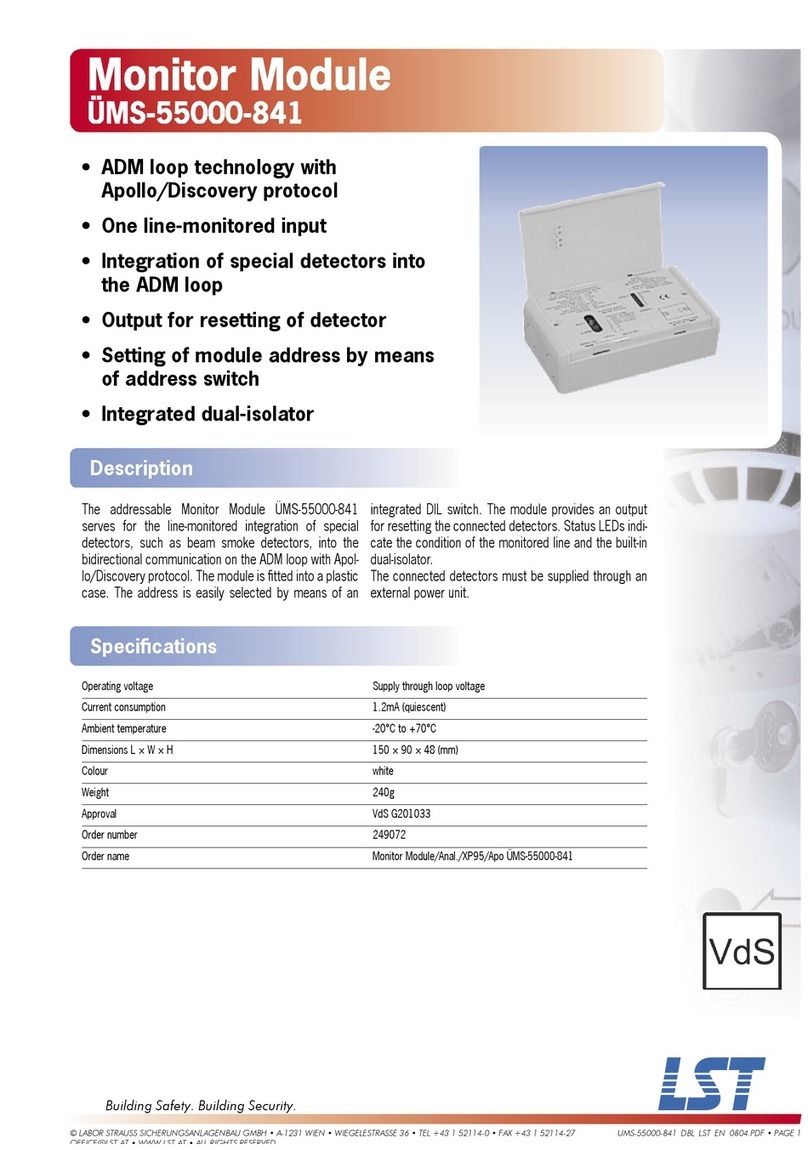GB.TBLZ49.091201
We reserve the right to alter specifications without notice. www.swegon.com 3
• Open the cover above the junction hood by lifting the
catch.
• Insert the cable through any cable grommet.
When using another type of grommet, remove them
premounted by first pressing through one side and then
through the other (1-2).
• Connect wiring according to the wiring diagram in the
instructions for equipment cubicles.
1
2
Drill holes in the duct.
• Make holes without 38 mm installation bracket.
• Make holes with 51 mm installation bracket
(see point 9).
3
Do not cut this end!
• Measure the ventilation duct.
• Cut the tube.
• The tubes must cover at least 90% of the duct’s width.
Detectors with venturi tubes of 600 mm are intended for
ducts with a max. duct width of 600 mm.
• Insert the end plug.
• Insert the seal onto the tube.
• Insert the tube into the bottom of the detector box.
• Lock the tube using the stop screw
4
• Install the tube and detector on the duct.
• Secure the detector box at 3 points at the markings of
the arrows.
Important! IMPORTANT!
The direction arrows (see the shape
of the detector’s base or the top of
the housing) must point in the same
direction as the air flow in the duct.
End plug
Stop screw
Seal
5Flow indicator.
The detector is equipped with an indicator, a red
plastic tab, which, when the detector is correctly
installed, swings out due to the air flow.
6Electrical installation.
Important!
If the indicator does not
move, consider moving
the detector or install a
fan tube.
Flow indicator
Venturi tube with auxiliary fan
7Performance checks.
Check the detector using the smoke detector
tester in spray form.
• Move the "test hole plug" to the
side and then quickly spray.
In the event of a deployed alarm the
LED lights red on the circuit board
and the detector. In the event of a
deployed service alarm the LED on
the circuit board lights yellow and
green on the detector.
• Reinstall the test hole plug.
Important!
Do NOT drill holes for signs or similar
in the plastic cover. This can cause
leakage that seriously affects the
function of the detector.


